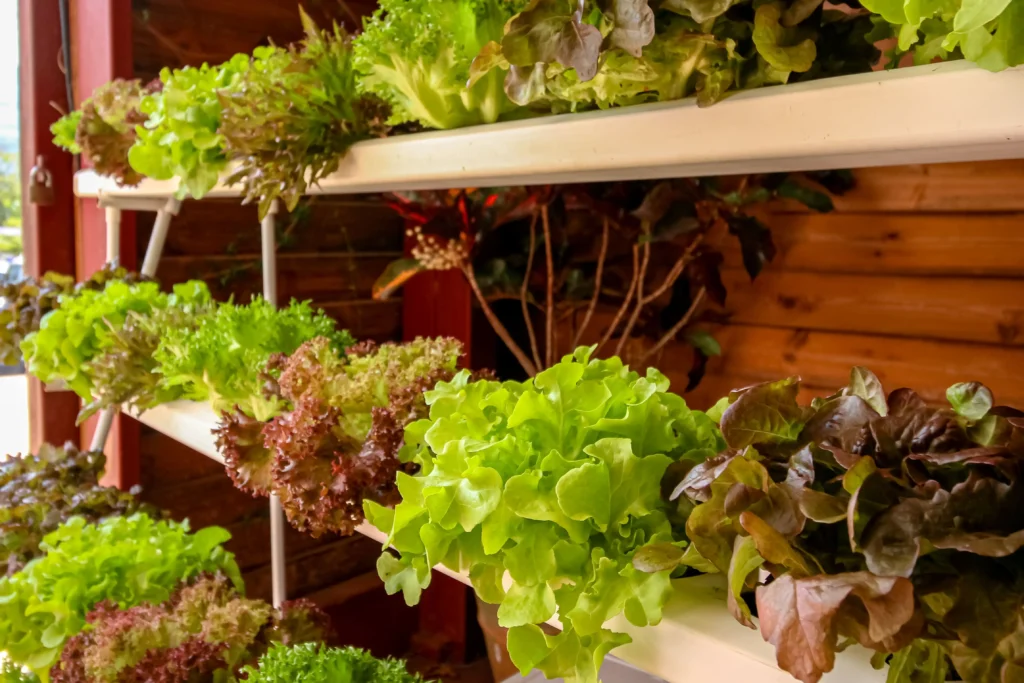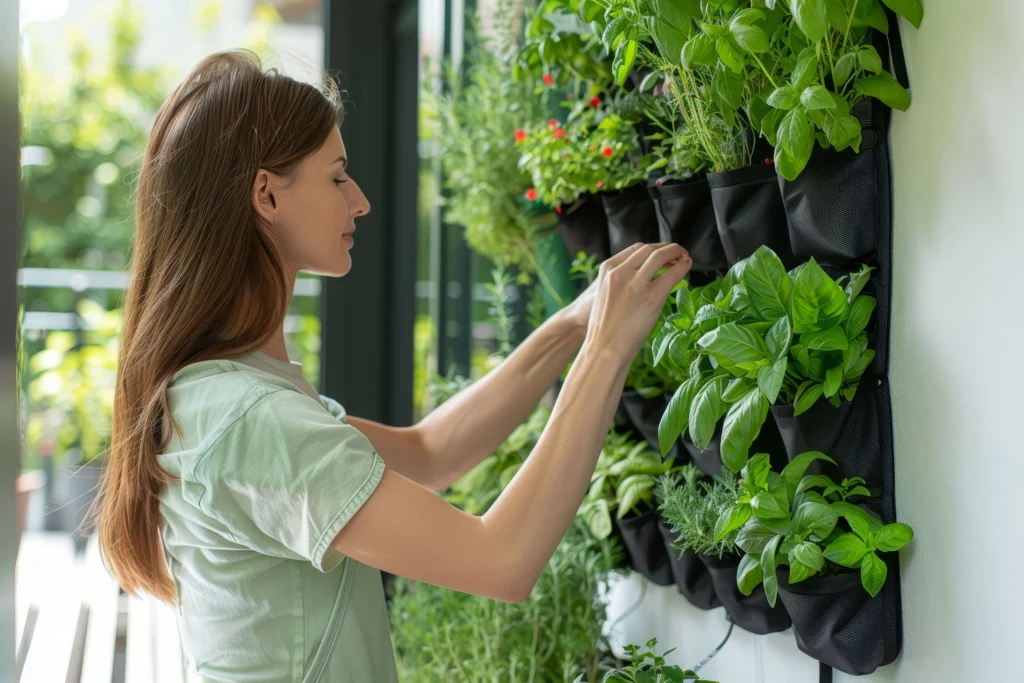Embracing Shade in Vertical Gardening
Growing edible plants for shaded vertical gardens is an excellent way to cultivate fresh, nutritious food in low-light environments, transforming underutilized areas into thriving green spaces.
This guide explores the best edible plants for shaded gardens, essential tips for maximizing growth, and creative ways to enhance productivity in your shaded spaces.
Watch This Before You Start:
“Curious about cultivating edible plants in areas with limited sunlight or shade? Check out this practical guide to shaded vertical gardening and discover the best plant varieties for low light.”
Watch the Video
Why Grow Edible Plants in Shaded Vertical Gardens?
Shaded vertical gardens offer several benefits that make them a compelling choice for gardeners with limited sunlight or small spaces:
- Space Optimization:
Shaded vertical gardens make the most of unused walls, fences, or corners, turning them into productive green spaces. - Fresh Produce:
Enjoy pesticide-free, homegrown herbs, vegetables, and fruits that are healthier and tastier than store-bought options. - Sustainability:
Encourages eco-friendly practices by using vertical space efficiently and reducing waste. - Aesthetic Appeal:
Adds greenery and life to shaded areas, enhancing the visual appeal of indoor or outdoor spaces.
For more eco-friendly gardening tips, explore our Sustainable Gardening Solutions.
Top Edible Plants for Shaded Vertical Gardens

Selecting the right plants is crucial for a productive shaded vertical garden. Here are the best edible plants that thrive in low-light conditions:
1. Leafy Greens
Leafy greens are the champions of shade gardening. They require minimal light and grow quickly, making them ideal for vertical gardens.
- Lettuce: Varieties like Butterhead and Looseleaf thrive in partial shade, offering tender, crisp leaves for salads.
- Spinach: Prefers cooler temperatures and indirect light, producing nutrient-rich leaves.
- Swiss Chard: Adds vibrant colors to your garden with its bright stems and thrives in low light.
- Kale: Hardy varieties such as Lacinato and Red Russian grow well in moderate shade and provide a continuous harvest.
2. Herbs
Herbs such as mint and cilantro are some of the best edible plants for shaded vertical gardens, offering both practicality and aesthetic appeal.
- Mint: Flourishes in shaded areas with moist soil, but be sure to grow it in containers to prevent spreading.
- Cilantro (Coriander): Prefers cooler, indirect light and is a favorite for culinary use.
- Parsley: Grows well in partial shade and is a staple for seasoning and garnishing.
- Chives: Adapt to low light and add a mild onion flavor to dishes.
3. Root Vegetables
Root vegetables can also be a surprising addition to your edible plants for shaded vertical gardens, as many of them adapt well to partial shade.
- Radishes: Mature quickly in partial shade, requiring loose and fertile soil.
- Beets: Both the roots and leafy tops are edible; they tolerate shade and grow best in nutrient-rich soil.
- Carrots: Thrive in light shade but need deep, loose soil for proper development.
4. Edible Flowers
Edible flowers add a decorative and flavorful touch to your garden.
- Nasturtiums: Produce peppery-tasting blooms that thrive in low-light areas.
- Violas: Grow well in partial shade and offer mild, edible petals for garnishes.
5. Small Fruits
Small fruiting plants bring variety to shaded gardens.
- Alpine Strawberries: Adapt to low light and produce small, flavorful berries.
- Gooseberries: Thrive in partial shade and yield tart, vitamin-rich fruits.
How to Set Up a Shaded Vertical Garden

1. Choose the Right Location
Identify areas that receive dappled sunlight or consistent indirect light. While complete darkness won’t work, most plants can thrive with 3-4 hours of light daily.
2. Select Suitable Vertical Structures
- Pocket Planters: Lightweight and easy to mount on walls, perfect for herbs and greens.
- Freestanding Frames: Flexible and portable, allowing you to adjust placement for optimal light.
- Wall-Mounted Panels: Great for compact indoor or outdoor gardens, maximizing vertical space.
3. Use High-Quality Soil
- Choose nutrient-rich potting soil with good drainage.
- Mix in compost to provide a steady supply of nutrients and improve soil structure.
4. Install an Efficient Watering System
- Drip Irrigation: Provides consistent moisture to plant roots and reduces water waste.
- Self-Watering Containers: Help maintain optimal soil moisture in shaded areas where evaporation is slower.
Tips for Maximizing Growth in Shaded Vertical Gardens
- Optimize Light Exposure:
- Use reflective surfaces, such as mirrors or white panels, to amplify natural light.
- Install grow lights to supplement light in particularly dark areas.
- Rotate Planters Weekly:
- Turn your planters or containers regularly to ensure even light distribution and balanced growth.
- Choose Shade-Tolerant Varieties:
- Focus on plants specifically bred for low-light conditions to increase success rates.
- Maintain Regular Pruning:
- Trim overgrown foliage to prevent overcrowding, improve air circulation, and direct energy to productive growth.
- Fertilize Wisely:
- Use organic fertilizers sparingly, as plants in shade typically grow slower and require less feeding.
Creative Ideas for Shaded Vertical Gardens
- Herb Wall:
Create a living herb wall in your kitchen or patio with mint, parsley, and cilantro for easy access while cooking. - Colorful Edible Flowers:
Mix nasturtiums and violas with leafy greens to add vibrant colors to your vertical garden. - Reflective Backdrops:
Incorporate mirrors or polished surfaces behind your garden to enhance light intensity. - Hanging Fruit Towers:
Grow strawberries or gooseberries in tiered baskets for a striking visual and practical solution.
FAQs: Common Questions About Shaded Vertical Gardens
Q: Can I grow edible plants for shaded vertical gardens in full shade?
A: Most vegetables require at least partial shade (3-4 hours of indirect light). Full shade is better suited for ornamentals or ferns.
Q: What’s the best way to supplement light in shaded gardens?
A: Use full-spectrum LED grow lights to mimic natural sunlight and support plant growth indoors or in darker areas.
Q: How often should I water plants in shaded areas?
A: Water less frequently than in sunny gardens, as shaded areas retain moisture longer. Always check soil moisture before watering.
Conclusion: Thriving in the Shadows
Creating a lush garden of edible plants for shaded vertical gardens proves that even spaces with limited sunlight can yield abundant, nutritious harvests. By choosing the right plants, structures, and techniques, you can create a thriving garden that produces fresh, nutritious food while beautifying your space.
Start your shaded vertical garden today and experience the satisfaction of growing green in every corner of your home.

